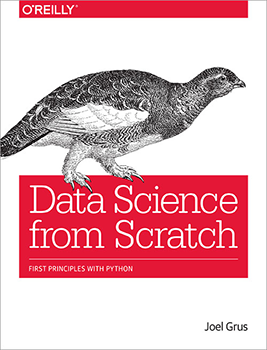"topic modeling" entries

Topic modeling for the newbie
Learning the fundamentals of natural language processing.
Get “Data Science from Scratch” at 50% off with code DATA50. Editor’s note: This is an excerpt from our recent book Data Science from Scratch, by Joel Grus. It provides a survey of topics from statistics and probability to databases, from machine learning to MapReduce, giving the reader a foundation for understanding, and examples and ideas for learning more.
When we built our Data Scientists You Should Know recommender in Chapter 1, we simply looked for exact matches in people’s stated interests.
A more sophisticated approach to understanding our users’ interests might try to identify the topics that underlie those interests. A technique called Latent Dirichlet Analysis (LDA) is commonly used to identify common topics in a set of documents. We’ll apply it to documents that consist of each user’s interests.
LDA has some similarities to the Naive Bayes Classifier we built in Chapter 13, in that it assumes a probabilistic model for documents. We’ll gloss over the hairier mathematical details, but for our purposes the model assumes that:
- There is some fixed number K of topics.
- There is a random variable that assigns each topic an associated probability distribution over words. You should think of this distribution as the probability of seeing word w given topic k.
- There is another random variable that assigns each document a probability distribution over topics. You should think of this distribution as the mixture of topics in document d.
- Each word in a document was generated by first randomly picking a topic (from the document’s distribution of topics) and then randomly picking a word (from the topic’s distribution of words).
In particular, we have a collection of documents, each of which is a list of words. And we have a corresponding collection of document_topics that assigns a topic (here a number between 0 and K – 1) to each word in each document. Read more…
